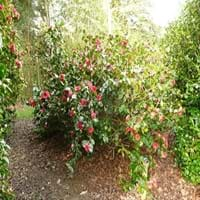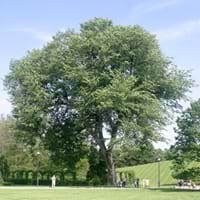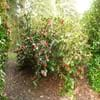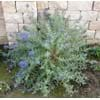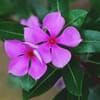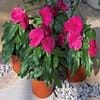Life Span
Perennial
Perennial
Type
Broadleaf Evergreen
Tree
Origin
China, Japan, Korea
South-Central United States, Texas, Mexico
Types
Not Available
Cedars
Number of Varieties
Not Available
Habitat
Dappled Shade, Shady Edge, Woodland Garden
River side, Woodlands
USDA Hardiness Zone
7-9
7-9
Sunset Zone
4, 5, 6, 7, 8, 9, 12, 14, 15, 16, 17, 18, 19, 20, 21, 22, 23, 24
Not Available
Habit
Oval/Rounded
Oval or Rounded
Flower Color
Light Pink
White, Ivory
Flower Color Modifier
Not Available
Bicolor
Fruit Color
Black
Red, Light Green, Tan
Leaf Color in Spring
Dark Green
Green, Yellow green
Leaf Color in Summer
Dark Green
Green, Dark Green
Leaf Color in Fall
Dark Green
Yellow, Green, Yellow green
Leaf Color in Winter
Dark Green
Not Available
Leaf Shape
Ovate
Elliptic, toothed
Plant Season
Spring, Summer, Fall, Winter
Spring, Summer, Fall
Sunlight
Partial Sun, Partial shade
Full Sun, Partial Sun
Growth Rate
Medium
Medium
Type of Soil
Loam
Clay, Loam, Sand
The pH of Soil
Acidic, Neutral
Acidic, Neutral, Alkaline
Soil Drainage
Average
Well drained
Bloom Time
Early Spring, Late Winter
Late Summer, Early Fall
Tolerances
Not Available
Pollution, Drought
Where to Plant?
Ground, Pot
Ground
How to Plant?
Cuttings, Seedlings
Seedlings, Stem Planting
Plant Maintenance
Medium
Medium
Watering Requirements
Average Water Needs, Do Not over Water
Keep the ground moist but not water-logged, Requires a lot of watering, Requires watering in the growing season, Water Deeply
In Summer
Drought Tolerant, Average Water
Lots of watering
In Spring
Moderate
Moderate
In Winter
Average Water
Average Water
Soil pH
Acidic, Neutral
Acidic, Neutral, Alkaline
Soil Type
Loam
Clay, Loam, Sand
Soil Drainage Capacity
Average
Well drained
Sun Exposure
Partial Sun, Partial shade
Full Sun, Partial Sun
Pruning
Remove damaged leaves, Remove dead branches, Remove dead leaves
Prune to stimulate growth, Remove damaged leaves, Remove dead branches, Remove dead leaves, Remove hanging branches
Fertilizers
10-10-10, 8-8-8
All-Purpose Liquid Fertilizer, fertilize in growing season, Nitrogen
Pests and Diseases
Black Mold, Flower Blight, Free of serious pests and diseases, Leaf Gall, Leaf spot
Bacteria wilt, Beetles, Red blotch
Plant Tolerance
Not Available
Salt, Shade areas
Flowers
Showy
Insignificant
Flower Petal Number
Double
Single
Foliage Texture
Medium
Fine
Foliage Sheen
Glossy
Glossy
Attracts
Butterflies
Butterflies
Allergy
no allergic reactions
Skin rash
Aesthetic Uses
Bonsai
Landscape Designing
Beauty Benefits
Not Available
Not Available
Environmental Uses
Air purification
Air purification, Amazing growth rate, Erosion control, Food for birds, Food for insects, Nesting sites for birds, Prevent Soil Erosion
Medicinal Uses
Astringent, Cancer, Haemostatic, Salve, Tonic
No Medicinal Use
Part of Plant Used
Flowers, Leaves, Seeds
Stem, Tree trunks
Other Uses
As a tea substitute, Used as a hair-dressing oil, Used for making green dye
Used as firewood, Used for woodware, Used in construction
Used As Indoor Plant
Yes
No
Used As Outdoor Plant
Yes
Yes
Garden Design
Feature Plant, Foundation, Mixed Border, Topiary, Bonsai, Espalier
Feature Plant, Shade Trees, Street Trees, Topiary / Bonsai / Espalier
Botanical Name
CAMELLIA japonica 'Debutante'
ULMUS crassifolia
Common Name
Camellia, Debutante Camellia, Japanese Camellia
Cedar Elm
In Hindi
Japanese Camellia
देवदार एल्म
In German
Japanische Kamelie
Cedar Elm
In French
Camellia japonais
Cedar Elm
In Spanish
Camelia japonesa
Cedar Elm
In Greek
Ιαπωνικά Camellia
Cedar Elm
In Portuguese
Camellia japonês
Cedar Elm
In Polish
Japoński Camellia
Cedar Elm
In Latin
Camellia Italica
Ulmus Cedar
Phylum
Magnoliophyta
Magnoliophyta
Class
Magnoliopsida
Magnoliopsida
Clade
Angiosperms, Asterids, Eudicots
Angiosperms, Eudicots, Rosids
Tribe
Theaeae
Not Available
Subfamily
Theoideae
Not Available
Number of Species
Not Available
Not Available
Season and Care of Japanese Camellia and Cedar Elm
Season and care of Japanese Camellia and Cedar Elm is important to know. While considering everything about Japanese Camellia and Cedar Elm Care, growing season is an essential factor. Japanese Camellia season is Spring, Summer, Fall and Winter and Cedar Elm season is Spring, Summer, Fall and Winter. The type of soil for Japanese Camellia is Loam and for Cedar Elm is Clay, Loam, Sand while the PH of soil for Japanese Camellia is Acidic, Neutral and for Cedar Elm is Acidic, Neutral, Alkaline.
Japanese Camellia and Cedar Elm Physical Information
Japanese Camellia and Cedar Elm physical information is very important for comparison. Japanese Camellia height is 210.00 cm and width 165.00 cm whereas Cedar Elm height is 910.00 cm and width 760.00 cm. The color specification of Japanese Camellia and Cedar Elm are as follows:
Japanese Camellia flower color: Light Pink
Japanese Camellia leaf color: Dark Green
Cedar Elm flower color: White and Ivory
- Cedar Elm leaf color: Green and Yellow green
Care of Japanese Camellia and Cedar Elm
Care of Japanese Camellia and Cedar Elm include pruning, fertilizers, watering etc. Japanese Camellia pruning is done Remove damaged leaves, Remove dead branches and Remove dead leaves and Cedar Elm pruning is done Prune to stimulate growth, Remove damaged leaves, Remove dead branches, Remove dead leaves and Remove hanging branches. In summer Japanese Camellia needs Drought Tolerant, Average Water and in winter, it needs Average Water. Whereas, in summer Cedar Elm needs Lots of watering and in winter, it needs Average Water.
